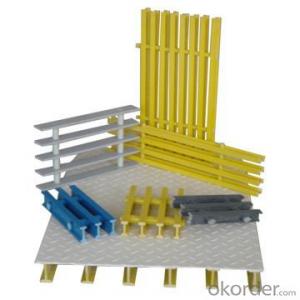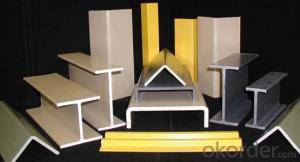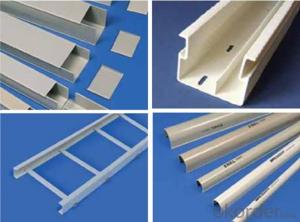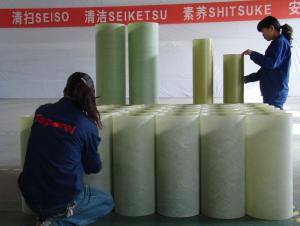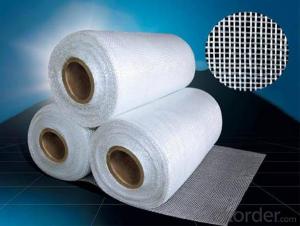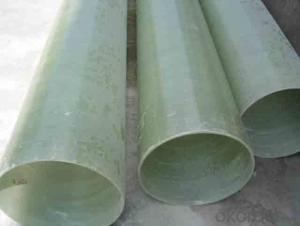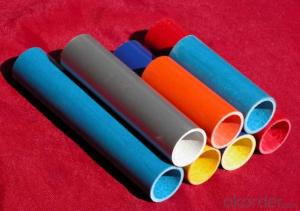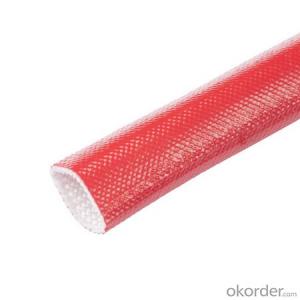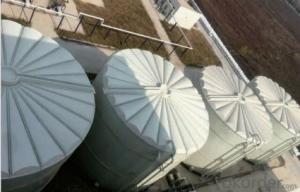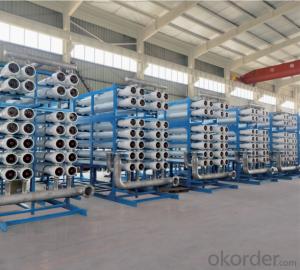FRP FRP PULTRUTION PROFILE-Rectangular tube
- Loading Port:
- China Main Port
- Payment Terms:
- TT or LC
- Min Order Qty:
- -
- Supply Capability:
- -

- OKorder Service Pledge
- Quality Product
- Order Online Tracking
- Timely Delivery

- OKorder Financial Service
- Credit Rating
- Credit Services
- Credit Purchasing
1.Brief Introduction
Pultrusion process is a mechanized process for FRP composites involves pulling a collection of fibers in the form of roving mat or fabric through a resin bath and then through a heated die to cure the resin, and then take shapes of profiles. FRP pultruded profiles are more than a kind of structure, which is very designable. Changing the choice of the materials and designs of the lamination process can make special properties for it. It can be widely use in railing, bracket of water circulation tower, sport equipment, tool handle, bracket of tent and others loading structure components
2.Characteristics
• Corrosion resistant and anti-ageing
• Water-proof, fire retardant, Heat Resistance
• Light weight, high strength and impact strength
• Non-magnetism and non-conductive
• Very designable, cut discretionarily
• Easy of installation and dimensional stability
• Long service life and maintenance-free
• Bright color and good appearance
3.Product Specifications
By changing different shapes of the mould (die), this production line can produce different profiles or rods. The following list is some products photos for reference.
No. | Item | No. | Item |
1 | Rectangular tube | 9 | Cable tray |
2 | Square tube | 10 | Handrail |
3 | Round tube | 11 | Profile for door & window |
4 | Channel | 12 | Guardrail |
5 | I-beam | 13 | End fitting of Radome |
6 | Angel | 14 | Shaft of the umbrella& tent |
7 | Epoxy rod | 15 | Profile for bridge |
8 | Platform and ladder | 16 | Ladder |
4.FAQ
Packing and Storage:
Packaging | by carton |
Delivery | 60 days after receiving your deposit |
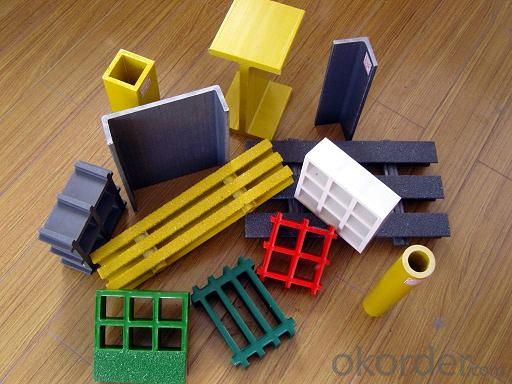
- Q:Is polyester a synthetic fiber? if not, then what is it?
- Yes; of course! That's why it has a chemical name like that!
- Q:What exactly is denim like material?? School dress code allows pants made out of this material but most of us in school don‘t even know what that means
- Q:There is a suit I saw made of a polyester blend. One button suit with side vents. Isit worth the investment?
- No. Polyester is garbage. Traditional suits are 100% wool. Casual or summer suits can be made from silk, cotton, linen, or other NATURAL fiber. If the cloth was born in a chemical plant, it is garbage.
- Q:I tried a sewing test on a piece of velour. No problem. When I test on microsuede I have gaps in the stitching both front and back. Really big gaps. Any thoughts. I tried adjusting tension. Still no problem with velour but microsuede same results. Help
- Microtex needle, lengthen stitches over those you'd use in an equivalent weight of cotton woven, play with the upper tension. You may find it sews better with a slight zigzag (width 0.5-1mm) compared to straight stitch. Consider trying tissue paper above and/or below the stitching. Generally, with most microfiber fabrics, I use a thinner thread than I would otherwise (polyester bobbin thread or really good quality serger thread) as it helps prevent threadjamming and puckering.
- Q:Do i have to use a plastic liner with 100% polyester shower curtain to keep the water in?
- I don't mean any harm or disrespect to you but wouldn't it make sense to use a plastic liner with any cloth curtain for a shower? Unless the polyester shower curtain is waterproof, then use the plastic liner! And please think about what your asking before you ask it! You answered your own question from the start!
- Q:The charge on the mirror‘s surface should be positive, I know that. But I don‘t know what this charge‘s effect on the glass would be. Would the glass shine in some way, or something?Thanks in advance.
- Refere to the chart on the link below for VERY POSITIVE AND VERY NEGITIVE As glass is near very positve and nylon(polyeter) is midway between neutral and very negative (so negative). SO static electricity will be produced between two. And you will observe sparking between two surfaces. CHART: * Human hands (usually too moist, though)-------------- Very positive * Rabbit Fur * Glass * Human hair * Nylon * Wool * Fur * Lead * Silk * Aluminum * Paper * Cotton * Steel-----------------------------------. Neutral * Wood * Amber * Hard rubber * Nickel, Copper * Brass, Silver * Gold, Platinum * Polyester * Styrene (Styrofoam) * Saran Wrap * Polyurethane * Polyethylene (like Scotch Tape) * Polypropylene * Vinyl (PVC) * Silicon * Teflon ---------------------------------Very negative
- Q:a cloth like this: cotton/polyester --combination i guess.i want to ask a tailor to make me a customized one so then, i have to buy the cloth for it.and where in Manila can i buy it?is there any at the mall? or at the so-called divisoria?how much would it cost me?thank you.
- Tutuban Mall in Divisoria has lots of cloth you can choose from. Ask your tailor first, how many yards you need for your coat. Good tailors often suggest the type of cloth that is best for your needs.
- Q:Our class have conducted an experiment for our Chemistry subject. In that experiment, there are two main materials in used, Sodium Chloride and Silver Nitrate.It does warn that we should be extra careful when handling the Silver Nitrate as it will left dark stain on cloths and skin. So i done the experiment with an extra careful. However i still manage to get the dark stain on my skin and also cloths.Is there anyway I can get rid of it?
- Q:I ironed a black polyester shirt and i left a shiney iron imprint on the sleeve, can it be removed?
- to steer away from this going on, you will possibly desire to have used a urgent fabric whilst ironing them. yet you nevertheless could placed a humid fabric over the trousers and press or in case you have a steam iron press them with steam and with a urgent coth beween iron and fabric
- Q:Is it ok to wash dry clean only materials??? Like maybe once once every 6 months or so. We have tried to dry clean our stuff, but it hasn‘t worked. We have a really nice comforter (king size) as well as matching throw pillows and pillow cases. They are mostly velvety. and the tags say to dry clean only. 2 pillow cases are100% polyester2 are66%rayon, and 34% polyester on the front and 60% cotton and 40% polyester on the backthe comforter is the exact same as the last 2 pillows and is stuffed with 100% polyester The throw pillows covers are 55% viscose and 45% polyester on the front and 100% cotton on the backThe pillow on the inside is 100% polyester.I didn‘t know if anyone would need to know the materials to make an educated guess, so I put them here anyways I have tried a damp cloth to no avail What they really need is a good washing but we don‘t own any other dry clean stuff so I am not sure what to do Please help!!!!
- I hardly ever take things to be dry cleaned. Washing is usually not what damages things, its usually the dryer. So I'd wash in delicate cycle and then line or air dry.
1. Manufacturer Overview |
|
|---|---|
| Location | |
| Year Established | |
| Annual Output Value | |
| Main Markets | |
| Company Certifications | |
2. Manufacturer Certificates |
|
|---|---|
| a) Certification Name | |
| Range | |
| Reference | |
| Validity Period | |
3. Manufacturer Capability |
|
|---|---|
| a)Trade Capacity | |
| Nearest Port | |
| Export Percentage | |
| No.of Employees in Trade Department | |
| Language Spoken: | |
| b)Factory Information | |
| Factory Size: | |
| No. of Production Lines | |
| Contract Manufacturing | |
| Product Price Range | |
Send your message to us
Similar products
New products
Hot products
You Might Also Like
